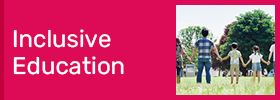I used to work at a special-needs school for children with intellectual disabilities, where I heard this noteworthy expression:
"When you take a supposedly restless child, like someone with ADHD, out into the nature, they become astonishingly calm."
Since then, I have been reflecting on the power of the outdoors and nature (or the downside of being in enclosed spaces) in the school setting.
At HILLOCK Primary School, every day at noon, we take our lunch boxes to a nearby park and eat our meals amid nature. We also try to engage classes outdoors as much as possible. We go to the same place at the same time every day, allowing us to see the subtle changes taking place in nature. For instance, after a windy day, broken branches lay scattered around, or after a rainfall, the grass and trees glisten with dew, or large puddle appear.
"Why aren't there any puddles over here?"
"The puddle that was there yesterday is gone! Where did the water go?"
The seeds of learning lie in the everyday life around us. Flowers bloom in spring, and insects appear in summer. In autumn, leaves turn red, and in winter, leaves fall, and snow spreads across the landscape. It is only by truly immersing ourselves in nature that we can experience the enriching seasonal changes.

It is often said that "experiencing nature is important for children's growth." I agree. That said, I also feel that it is not as simple as "going camping twice a year."
Experiencing nature as an unusual, occasional event often ends up becoming a mere entertainment, leading to excitement that quickly fades. I think that by having nature as a fixed point of observation in our daily lives, we can capture the cycles in Earth's systems and the workings of life.
The educational value of nature is immeasurable, but one of its key aspects is that it offers an inexhaustible supply of malleable materials.
Malleability refers to the capacity of an object or substance to change its form. A tree branch can split into two when you snap it, or a hole can be made in the ground when you dig. Depending on the location, generally we are not reprimanded for breaking branches or digging holes in the ground. This is probably because we adults share the unspoken knowledge that "things in nature belong to everyone" and "they are not something that can be controlled by anyone." This would not be the case for toys used indoors or facility equipment.

Of course, some playthings have high malleability, such as building blocks and origami. However, as one would expect, it is not permissible to destroy or color the building blocks themselves, and, from what I have heard, many childcare facilities these days restrict the use of origami to two pieces per child.
Another important factor is that there are no walls or ceilings in nature. In an indoor environment, unless you are in a very exceptional place, you are restricted by walls and ceilings. For children, this may have become a constraint on their actions and imagination.
These days, it seems as if the restrictions are more firmly enforced: "You must not speak loudly or make noise because you will receive complaints from those around you," "You must not act wildly because it will dirty the walls," and so on. When children enter school, they are confined between the prearranged desks and chairs and are scolded if they try to escape. In such an environment, it seems to me that children who have emotional outbursts are reacting rather naturally.Recently, even parks have been subject to a series of restrictions such as "no loud voices because they disturb the neighbors" or "no playing ball." What is happening to children's rights to grow up?
Let's go outside more often. When we get outside, it can make us adults feel more relaxed and open-minded. It is not only children who are confined indoors; adults with responsibilities are equally, if not more, restricted indoors.
We are told that "more and more children are having trouble adapting to school and society," but I think it is more accurate to say that "more and more adults want to adapt society's conveniences to children." Adults are also said to be "learning," but I feel that it is the adults who need to reflect and relearn how they abuse their vested interests with greater urgency than the children.















